The Bugatti Mistral Is The Perfect Swan Song For Automaker’s Epic W16 Engine
The topless 1,600-HP hypercar celebrates the end of Bugatti’s eight-liter, quad-turbo W16.
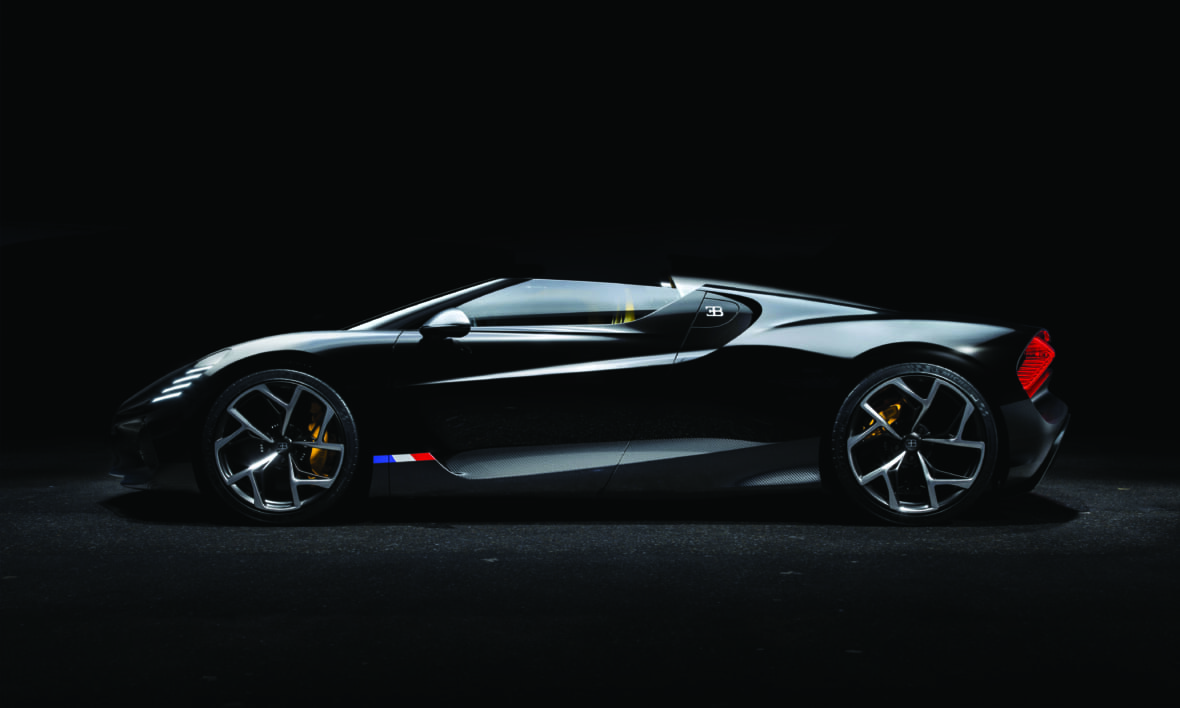
“This car is the celebration of the 16-cylinder engine, as it’s going to be the last time we build the eight-liter, quad-turbo W16 into a road-going car,” Frank Heyl, Bugatti’s Deputy Design Director, announces as I stare slack-jawed at his latest creation, the Bugatti Mistral.
It’s well over 100 degrees on this torrid August day on the grass of The Quail: A Motorsports Gathering during Monterey Car Week, and every posh lad and augmented trophy wife is doing their best to keep the sweat from ruining their couture outfits. For some reason it seems even hotter on this corner of the ritzy golf course.
There are many things, after all, that inspire the Mistral to accelerate heartbeats and raise body temps; the absurd 16 cylinders and cavernous 8-liter engine block, for starters. Throw in four turbos, 10 radiators and six catalytic converters. Or how about its Martian performance metrics? Does 1,600 horsepower warm the cockles of your heart? How about a 261 mph top speed, or a 0-60 mph sprint of just 2.4 seconds (in theory, anyway, as Bugatti announced it will no longer chase speed records to confirm these stats)?
If not, the Mistral’s $5-million price tag should leave you weak in the knees like SWV. But even with all those ALL CAPS headlines, there’s one last selling point that sets the Mistral apart from the volley of limited edition unicorns (e.g. Divo, La Voiture Noire, Centodieci, Vision Gran Turismo, Bolide, etc.) Bugatti has built since the Mistral’s “donor” vehicle, the Chiron, was unveiled in 2016. The Mistral is missing one thing all the others have: a roof.
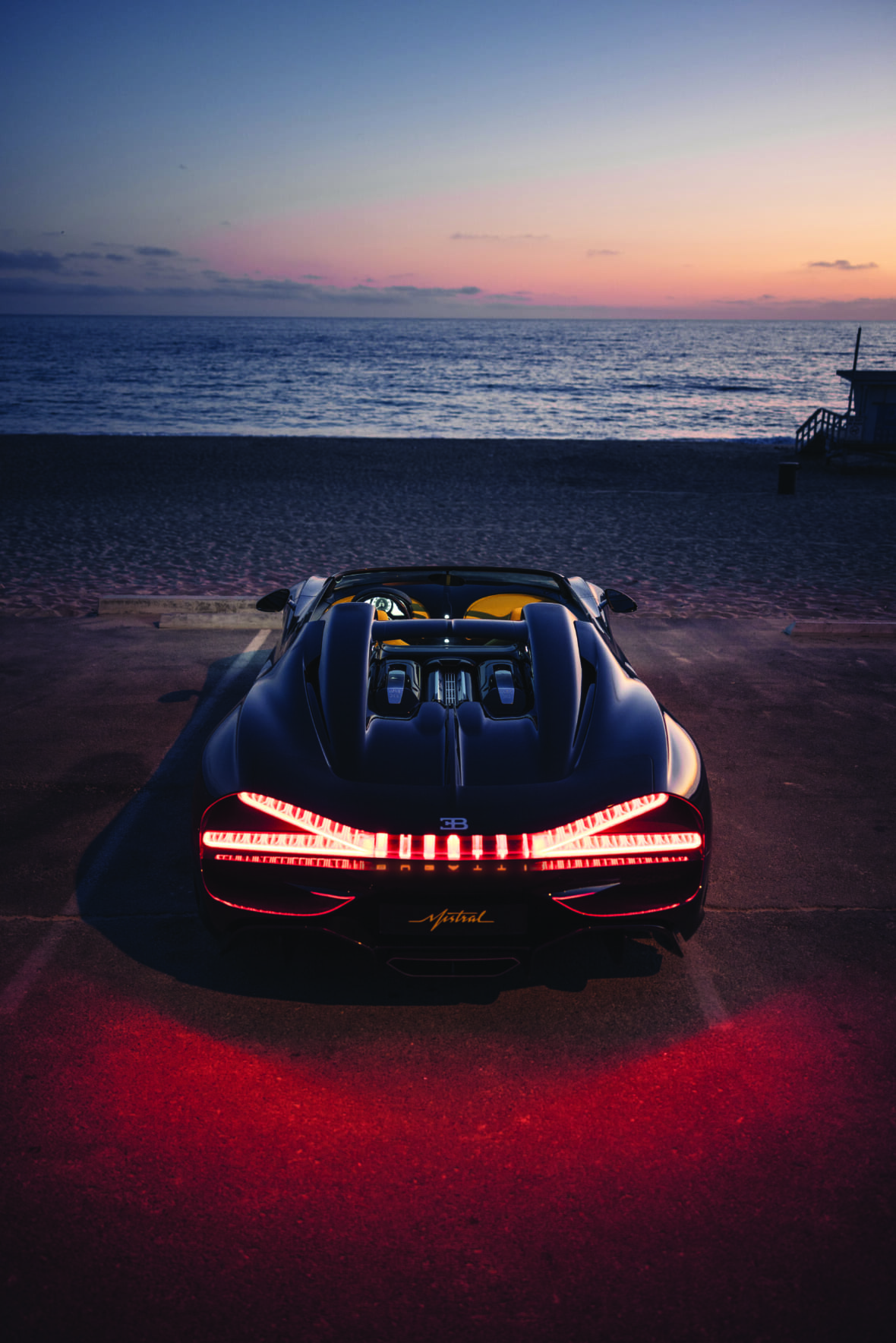
“Why would we do an open-top car?” laughs Heyl, repeating my dumbfounded question. “If you think about this for a second, what is the ultimate sensation you can get out of that engine, including experiencing all the noises and sounds that it makes? You would make it in an open-top car, right?” he asks rhetorically.
“Because you hear the induction noise, you hear the turbos’ whistle and so on. And that is exactly the acoustic sensation you get when you drive this car: you sit there, the intake for the engine just above your head, and what happens is you put your foot on the throttle you hear that low-down eight-liter growl—and then when you lift your foot off, it’s like Darth Vader is breathing onto your neck!”
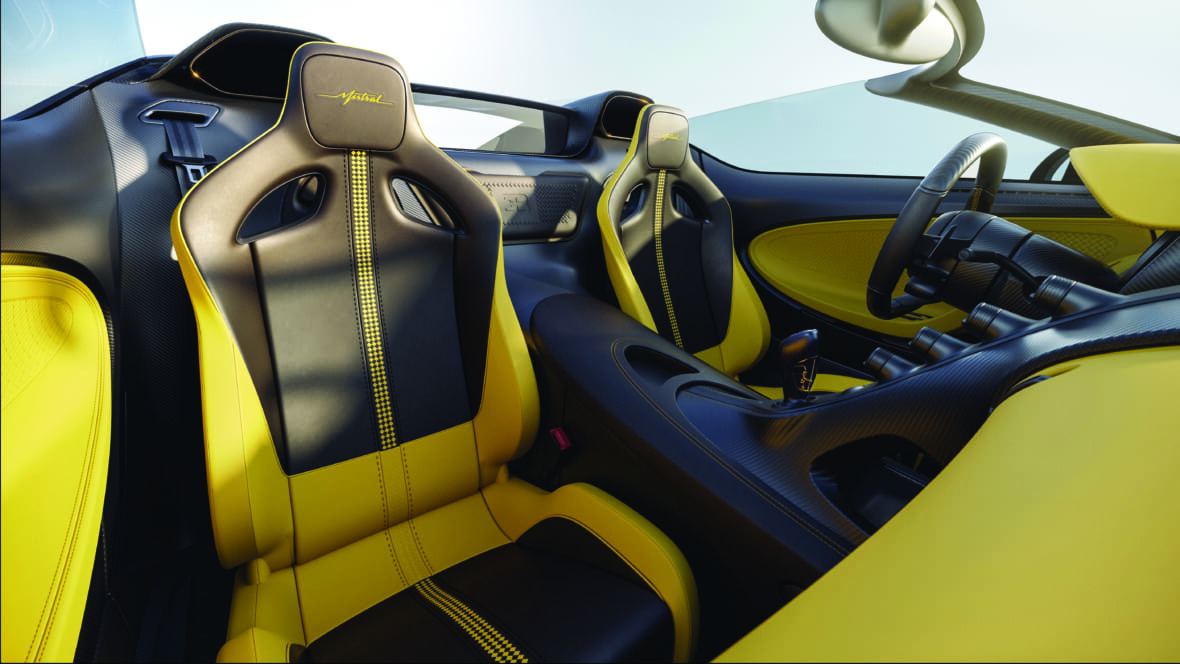
Unlike most people walking this Earth, we actually know what Heyl is referring to. About a decade ago we drove the Veyron, the vehicle that resurrected the Bugatti badge and ushered a new era for the legendary French marque. But it wasn’t just any Veyron—it was the Grand Sport, the roofless version.
There were three memories seared into our cortex from that star-dusted experience: the terror flowing through our veins as we drove a $2-million vehicle for the first time; the chest pressure from doubling the speed limit on a five-second speed run; and perhaps most saliently, the sound. While the W16 roared so loudly during throttles our earlobes rattled, even more impressive were the inhaling gasps the Grand Sport would make when we’d step off the gas, and the intake directly over our head would hungrily suck in air like a dragon prepping to scorch the earth black.
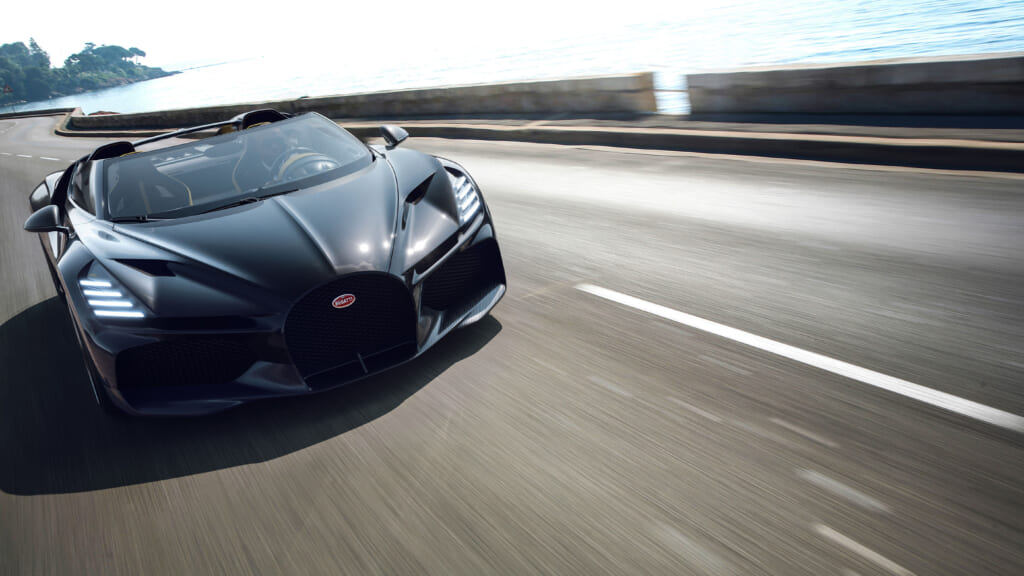
If the Grand Sport mirrored having a giant mystical monster on your shoulder, the Mistral’s “1,600 horsepower, bigger turbos, everything bigger,” as Heyl says, should account for even greater drama. “That’s why we think it’s a worthy celebration to the last time that we put such an engine into a car,” the Hamburg-born designer smirks.
Of course a hypercar cannot be defined by statistics, nor summarized by numbers. It must boast a loin-stirring soul that forges it unforgettable. And to see that black Mistral gleaming under the California sun is to remember it always. Heyl walks us around the low-slung panther amongst the awestruck crowd and points to its vertical headlights, a Bugatti signature differentiating the exclusive models from the 500-unit Chirons—limited-run centaurs that allow the design team a chance to “reinvent” themselves.
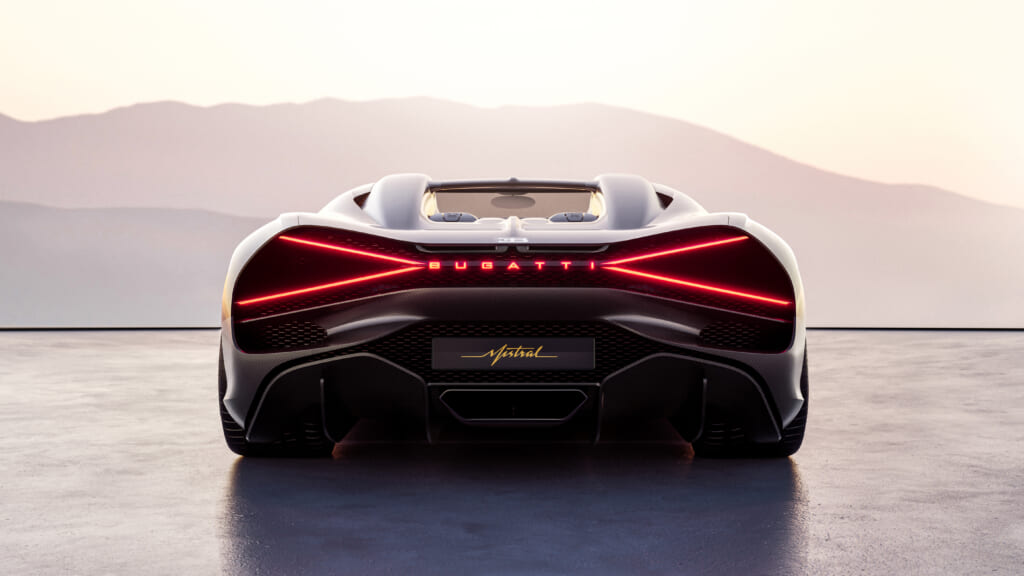
He points to the wider three-dimensional horseshoe grille, and the wedge-like forward-leaning stance to accentuate the muscularity of the rear haunches. The X-shaped rear seems to excite him the most. “Customers absolutely loved the X tail lamp of the Bolide,” he gushes, but notes the track car that inspired the design lacked legal requirements that had to be implemented in this road-legal version. “It doesn’t just look really cool, it’s also aerodynamically and thermodynamically functional.”
He takes great time to point out the unique interpretation of the Mistral’s ‘Bugatti Line’—that giant C-shaped swoop behind the door of the Chiron meant to evoke the curved ‘E’ of Ettore Bugatti’s signature. “The line is the backbone architecture of the entire design of the car,” Heyl stresses. “Everything else is so reduced that you really have this line as the number one thing on the car.”
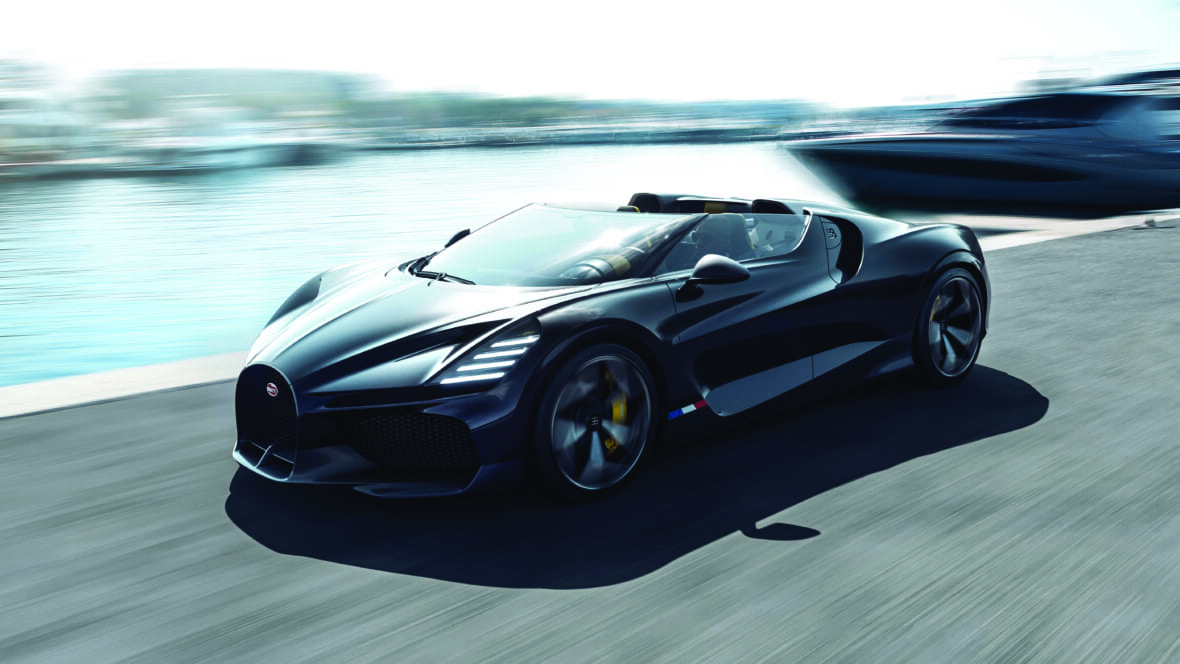
Mate Rimac, the young founder of the eponymous all-electric hypercar company, recently bestowed with taking the reins of the 113-year old Bugatti badge, offered his own strong thoughts on the Mistral in Monterey. “The union of a roadster format and our W16 powertrain is absolute perfection,” the Bugatti-Rimac CEO offered at the Quail unveiling. “With the roof removed, and a pair of large air intakes directly behind your head feeding around 70,000 liters of air through the engine every minute at full bore, driving the W16 Mistral connects you to the intricate workings of this revolutionary powertrain like no other Bugatti to date.”
Of course it’s not easy owning a piece of history. Despite its stratospheric price tag, all 99 units of the Mistral are already sold out. For the last vehicle to ever claim the pinnacle internal combustion engine the world has ever seen, that’s just the price you pay.
